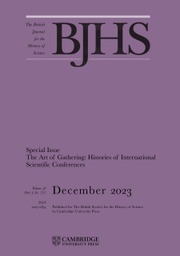In Soda Science, Susan Greenhalgh uncovers an array of strategies that Coca-Cola and other food companies use to influence science and public policy on obesity. Greenhalgh summarizes the key principle underlying these companies’ public policy goals as exercise-first (soda-tax-never). In other words, they sought to guide scientific research and policymaking so that it promoted ‘soda science’, which focused on teaching individuals to burn more calories rather than studying the kinds of foods and beverages that might be contributing to obesity and potentially regulating those products.
Soda Science revolves around the story of a non-profit organization, the International Life Sciences Institute (ILSI), founded in 1978 by Alex Malaspina, a senior vice president at Coca-Cola. According to Greenhalgh, the organization outwardly portrayed an image of producing objective science about nutrition and food for the public good, but its primary mission was ‘to create science to meet the needs of the food industry’ (p. 31). Its funders included McDonald’s, PepsiCo, Proctor and Gamble, Nestlé, Kellogg, Kraft and many other prominent food and beverage companies.
The book’s first half focuses on ILSI’s activities in the United States, which included cultivating relationships with prominent academic scientists – including James Hill (University of Colorado) and Steven Blair (University of South Carolina) – who could serve as advisers and collaborators. With these academics, ILSI promoted initiatives including a book called The Step Diet: Count Steps, Not Calories, to Lose Weight and Keep It Off Forever, a Take 10! classroom physical activity programme, a campaign called America on the Move and a medical programme called Exercise Is Medicine. These efforts culminated in the creation of an expert committee at ILSI (Energy Balance and Active Lifestyle) that worked to develop an extensive scientific foundation for these initiatives. However, Coke overplayed its hand when it created an academic–industry partnership called the Global Energy Balance Network (GEBN), which collapsed in 2015 after the New York Times published an influential exposé of Coke’s efforts to influence science and policy related to obesity.
The second half turns to the efforts of ILSI-China, which was astonishingly successful at influencing Chinese government policy. A perfect storm of favourable factors contributed to ILSI-China’s success between roughly 2004 and 2015, with its work becoming ‘the foundation of a wide array of state policies that are likely to be in place for a very long time’ (p. 243). These favourable factors included the Chinese state’s desire to engage in ‘marketization’, ‘globalization’ and ‘scientization’ (p. 140); the personal ties (guanxi) between high-level Chinese government officials and ILSI-China’s leader (Chen Chunming, who was hand-picked by Alex Malaspina); ILSI-China’s close ties to the Chinese Ministry of Health; limited government funding in China for public health, coupled with enthusiasm for industry funding of scientific research; and a political and scientific culture that discouraged the airing of dissenting views. ILSI-China sponsored conferences dominated by corporate-friendly scientists like Hill and Blair, promoted Chinese initiatives modelled after US policies like America on the Move, and generally shifted China’s anti-obesity efforts so they focused on activity rather than diet. According to Greenhalgh, there is even ‘persuasive’ evidence that Chen Chunming stopped an early effort in China to tax sugar-sweetened beverages (p. 219).
Soda Science has several valuable qualities. First, its detailed analysis of ILSI advances scholarship on the ways in which corporations can use seemingly independent NGOs to advance their interests. Second, Greenhalgh’s comparison between ILSI’s work in the United States and in China provides an enlightening cross-national comparison of the ways industry strategies can proceed in different institutional and cultural contexts. Third, Soda Science includes a fascinating analysis of thousands of emails between Rhona Applebaum (a high-level executive at Coke) and a variety of academic scientists between 2010 and 2015. These exchanges provide excellent insights into the strategies that can be used to cultivate ‘quasi-corporate’ scientists with academic affiliations but who serve as mouthpieces for industry interests. Fourth, the book provides important discussions of the ethical principles in both the United States and China that were supposed to prevent inappropriate corporate influences, and Greenhalgh carefully uncovers the ways in which those principles failed in practice.
Greenhalgh develops a number of concepts for characterizing and critiquing the practice of ‘soda science’, and she discusses several (product-defence science, product-defence non-profit, the sociology of corporate recruitment and the cultivation of academic advisers) in an appendix. Recent work by philosophers of science could strengthen this conceptual project. Early in the book, Greenhalgh calls for critics of soda science to move beyond black/white conceptual frameworks that paint industry-funded science as mere PR masquerading as science. She argues that soda science does count as science, albeit ‘corrupt’, ‘distorted’ or ‘manipulated’. Nevertheless, prominent quasi-corporate scientists like Hill and Blair are likely to insist that they were already convinced by the evidence for ‘exercise-first’ approaches to obesity and that their collaboration with industry influenced their pre-existing views little. Whether or not this is entirely accurate, Bennett Holman and Justin Bruner’s concept of industrial selection (Philosophy of Science (2017) 84) could help make sense of this phenomenon; it describes situations in which industry selectively funds researchers who hold industry-friendly views, thereby potentially biasing the scientific community without needing to alter the reasoning of individual scientists. David Freeborn and Cailin O’Connor have proposed the related concept of industrial distraction (Philosophy of Science (2025), DOI:10.1017/psa.2025.1), in which industry promotes relatively high-quality research in ways that nevertheless mislead the public. Attention to this scholarship could shed further light on some of the phenomena Greenhalgh describes.
In sum, Soda Science is a fascinating, well-researched and important book. It is also inspiring. Greenhalgh illustrates how humanists and social scientists can do work that generates significant scholarly insight while also helping to address urgent social challenges.



